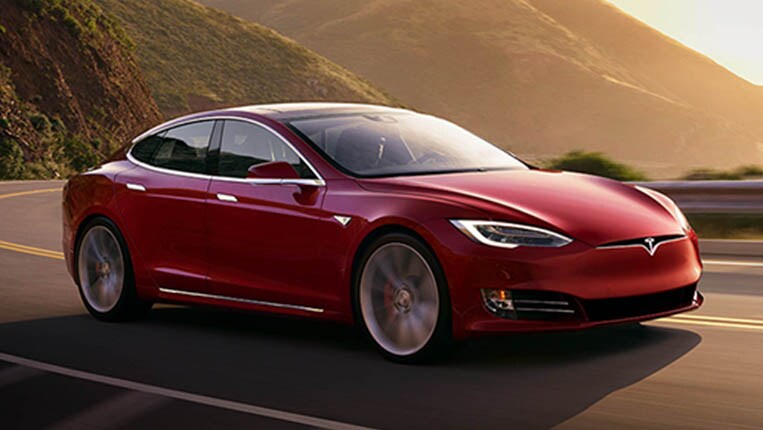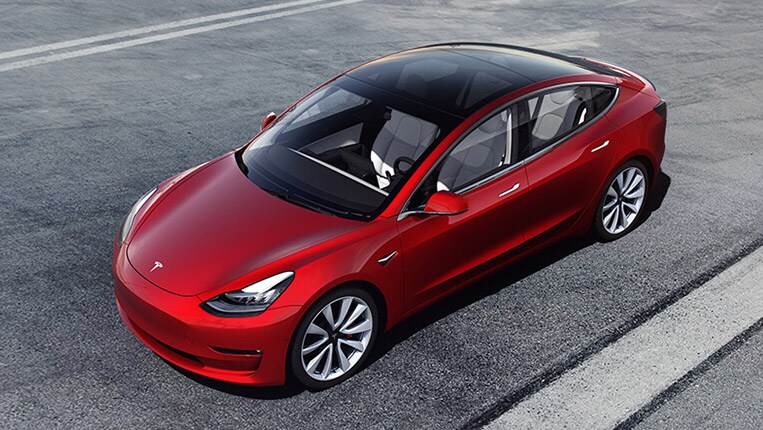Go big or go home. The Tesla Model S boasts range, size, and performance over its little brother, the Tesla Model 3. But is it the right choice for you?
Tesla Motors continues to play the disruptor in the automotive market, thanks to electric-powered vehicles like the Model S and Model 3 sedans. Granted, the Silicon Valley-based company also offers a crossover, the luxurious Model X, and has the Model Y compact SUV due to arrive by 2020.
But the Model S sedan is the car that put Tesla on the map, and the Model 3 is the vehicle designed to put the company onto the shopping lists of mainstream car buyers. So, we’re going to look at how these two EVs compare when pitted directly against each other.
Is the larger and pricier Model S still the standard-bearer for the Tesla brand? Or does the smaller and less-expensive Model 3 make a bigger and better first impression for potential electric car owners? Let’s break things down into five simple categories:
Price
This should be an easy win for the Model 3 since the compact sedan has a starting price that’s considerably lower than the larger Model S. Check Tesla’s official website and you’ll see the Model 3 starts at $37,990, while the Model S costs a whopping $74,990 for the least expensive variant. Choose the Model S in Performance trim with Autopilot and you’re looking at a starting price that breaks the $100,000 barrier.
The problem for Tesla was when it came to starting production of the entry-level Model 3. For many months, priority was initially given to building the more expensive versions, fitted with a bigger battery pack and all-wheel drive. Start loading options onto a Model 3 and, surprise, the price gap between it and its bigger brother, the Model S, narrows.
A range-topping Model 3 with the dual-motor and all-wheel drive setup in Performance trim starts at $54,500. Add AutoPilot and Tesla’s Full-Self Driving Capability options for $8,000, and you’re looking at a Model 3 that retails for $62,990. All in, it’s more than $10,000 less than the entry-level Model S and considerably cheaper than a fully-loaded Tesla flagship sedan. Winner: Model 3
Power
If you think electric cars have anything to do with golf-carts, then get behind the wheel of a Tesla. These sedans are fast, no matter if you’re going for a Model 3 or Model S. You’ve probably read about the optional Ludicrous mode that’s available in the Model S, which gives it supercar-like acceleration. Punch the gas pedal and the sprint from 0-60 mph takes only 2.4 seconds, according to Tesla. That’s crazy fast and about equal to the acceleration provided in the multi-million-dollar Bugatti Chiron.
A Model 3 in Performance trim is no slouch, however. The same 0-60 run is accomplished in 3.2 seconds and, ironically, it’s the Model 3 that has a slightly higher top speed (162 mph, versus 155 mph in the Model S). But if you’re a speed freak and want the ultimate in near-silent and scary-fast acceleration, the obvious winner is the Model S. Winner: Model S
Range
For many people considering an electric car, this is the single most important factor. What good is an EV if it can’t get you where you need to go, and then back again. When it comes to range, Model 3 offers a wider overall spread. The entry-level Model 3 has a range of 250 miles, which is about equal to what you get in a mainstream rival like the Chevrolet Bolt (238 miles per charge). At the upper limit for both the Model 3 and Model S, the difference in terms of range is considerable. A Model S in Long Range trim manages 402 miles for every charge, while a Model 3 Long Range spec delivers 322 miles of range. In Performance trim, both cars suffer slightly with the Model 3 posting 279 miles range to the Model S range of 348 miles. Winner: Model S
Space
The bigger car is going to provide more interior room, right? You’ll be surprised to learn the Model 3 offers cabin room that’s almost identical to what you get in the larger Model S. In fact, the Model 3 offers slightly more front and rear headroom than the longer and sleeker Model 3. When it comes to front and rear legroom, the two are as close as you can get. Each delivers 42.7 inches of front legroom, with the Model S holding the slightest advantage in rear legroom at 35.4, versus 35.2 in the Model 3. It’s only in hip room and shoulder room that the Model S begins to, ahem, stretch out from its smaller sibling.
In terms of cargo space, the Model S streaks ahead with more than 26 cubic feet of trunk space, opposed to about 15 cubic feet in the Model 3. Credit the larger sedan’s convenient rear hatchback, which opens wide and makes cargo-toting a painless process. There is also the option of two rear-facing jump seats available in the Model S, though these are only suitable for small (and brave) young children. Cabin space is close, but cargo room is a clear win for the bigger car. Winner: Model S
New versus used:
Let’s stir up a little drama by adding a wild card option, a used Model S compared to a brand-new Model 3. We looked at what an average price would be for a 2012 Model S, the sedan’s first year of production. Basing our search in South California and assuming the car has about 55,000 miles, a Fair Market Range according to KBB.com would place the Model S price between $26,000 to $32,000. That’s at least several thousand dollars less than the least expensive Model 3 though admittedly, you have a 7-year-old EV and not a brand-new edition. Still, it’s food for thought if you love the idea of going electric with plenty of power and luxury along for the ride.
In the end, with the price being a huge factor for most shoppers, it’s the less expensive Model 3 that’s the better EV. With similar range and cabin space to the Model S, performance that’s still jaw-dropping fast and a price that’s coming back to Earth, the Model 3 is finally living up to its full potential.
Overall Winner: Model 3









